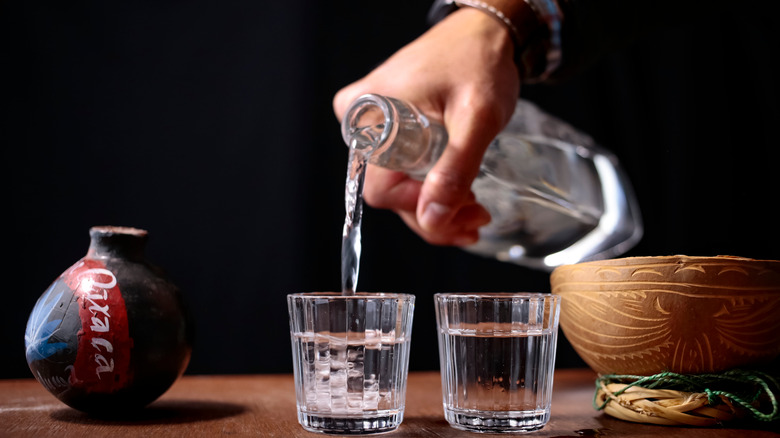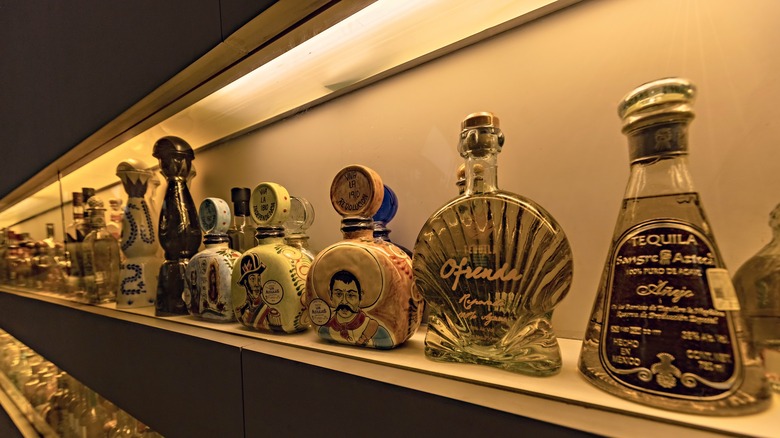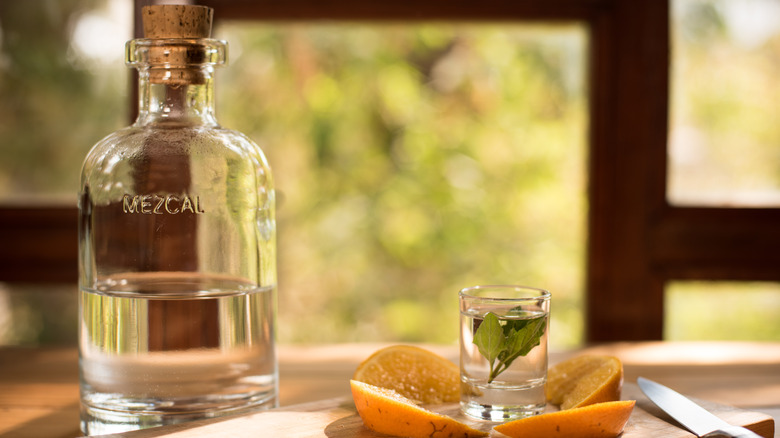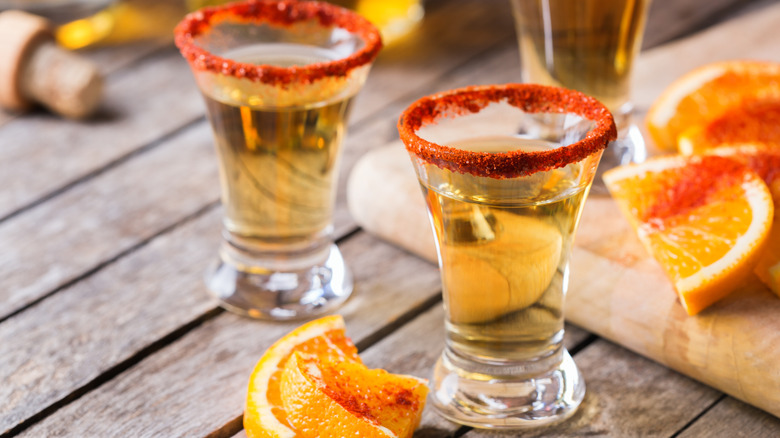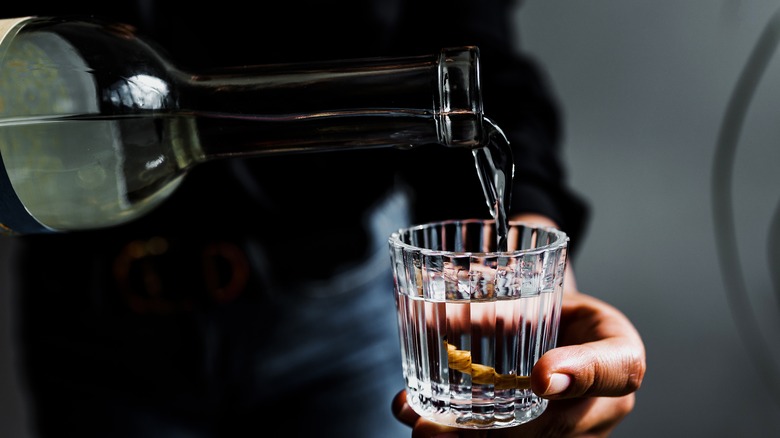Get To Know 5 Types Of Mezcal
If you know anything about tequila, you know it's made from agave. Specifically, it's made from a species of agave known as agave tequilana or blue Weber, so named for its blue hue and the guy, Weber, who discovered it. But when it comes to mezcal, tequila's older, smokier cousin, the variety of agave is not set in stone. In fact, the breadth and diversity of mezcal and the plants from which it's made are precisely what makes it so exciting.
First, a primer. Mezcal is a distillate derived from fermented cooked agave. Compared to tequila, it is made in a rather rustic way: the agave gets slow-roasted in a large conical pit in the ground, fermented naturally in wooden vats, and distilled in small copper – and sometimes even clay – stills. More than 200 species of agave exist, a number of which are indigenous to Mexico. Mezcal can be made from about 30 of them.
The spirit is only officially recognized as being produced in eight of Mexico's 31 states, even though mezcal is produced in almost every state in the country. Most of the mezcal available in the U.S. is from Oaxaca, the spirit's capital (also a mole capital). More brands are imported each year, which means greater access to some of the more obscure varieties. Here are five types of mezcal to know.
Espadín
The most common agave, it accounts for some 90% of mezcal production. So, you can expect it to be versatile, tasting very different from one brand to another, depending on the hand of the producer or mezcalero. If it seems familiar when you taste it, that's because it's the genetic grandfather of blue agave, which is used for tequila. Bottle to try: Wahaka Mezcal Joven Espadín ($40).
Tobalá
Deemed the "king of mezcals," this rare variety is mostly harvested from the wild. It likes rocky, shady soil at high altitude and does not produce offspring like other agaves so it relies on birds and bats to spread its seeds through pollination. Mezcal made from tobalá tends to be fruity and complex... and usually pretty pricey. Bottle to try: Del Maguey Tobalá ($135).
Tobaziche
The same genetic species of agave can look and taste very different depending on where it's grown. What's even more confusing is that, thanks to so many regional dialects, a species can have different names. Tobaziche (part of the Karwinskii agave family, which includes madre cuixe, barril and more varieties) is often harvested wild and can make for a herbaceous, savory mezcal. Bottle to try: Pierde Almas Tobaziche Mezcal Joven ($120).
Tepeztate
Also harvested wild, this agave can take up to 30 years to reach maturity, so don't expect any sort of regular supply of it. It's made when it can be. The plants are easy to recognize once they've flowered thanks to bright canary yellow blooms at the top of their tall stem or quijote. The mezcal resulting from this agave is intensely flavored, bringing to mind cologne. Bottle to try: Try Mezcalero Release No. 5, a blend of espadín and tepeztate ($85).
Arroqueño
The Latin name of this agave is agave Americana. Several arroqueño mezcals are now available in the U.S., which is lucky for us. The spirit made from this plant can be floral, even vegetal, but seems to often have a spicy, bitter chocolate note. Bottle to try: Los Siete Misterios Arroqueño ($100)

